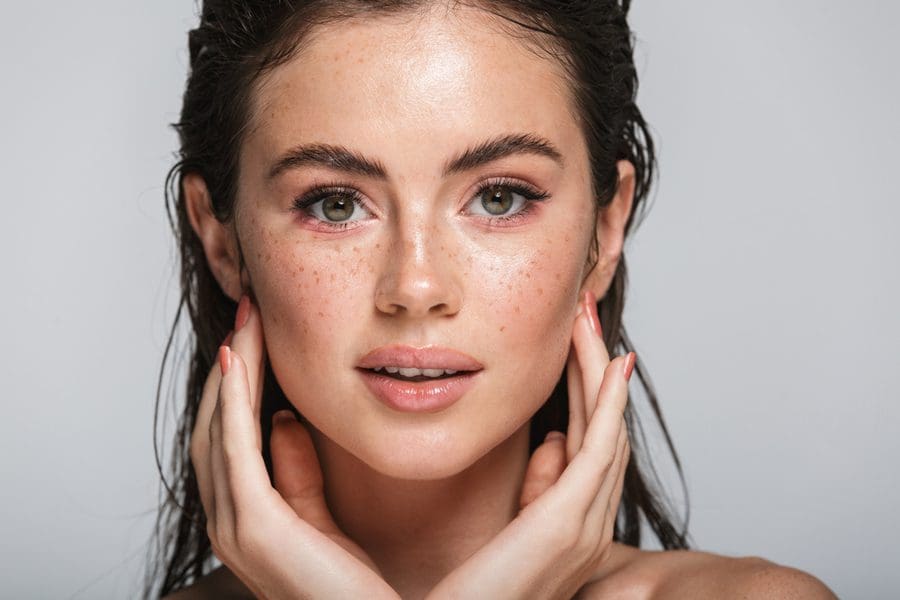Time may be running out for the Korean 10-step skincare routine that took the United States by storm. A growing number of doctors and beauty experts say most people find they probably need only half of the products they’re using. Many newer beauty brands are advocating a daily ritual with limited products.
Fans of influencers on Instagram, YouTube, and TikTok may feel pressure to use trending potions of vitamin C, niacinamide, and retinol to prevent wrinkles and clear up blemishes. Those who try out K-10’s prescribed second cleanser, toner, essence, scrub, neck cream, and facial oil often see flawless results…at first. Sadly, that initial taut glow can be followed by irritation and redness. It’s just too much for sensitive skin.
The time-consuming K-10 bedtime routine isn’t addressing the needs of 95 percent of consumers, says one dermatologist. Layering on too many products may instead contribute to premature aging and stressed-out skin. Many K-10 fans have found their issues multiplying as they add more products, and they often end up buying more products to correct these issues. It’s a vicious cycle that’s no good for your wallet or your skin.
Simplicity is overtaking exhaustive routines
Many at home with time on their hands during the first days of the pandemic turned to self-care and experimenting with maximalist skincare routines. Now the trend is toward simplicity along with reconsidering just how much product is needed. Beauty experts recommend focusing on real-world results instead of matching social media influencers whose flawless skin may often be credited to using lasers or Botox.
Minimalist shoppers increasingly are attracting the attention of beauty brands. Predictions are that shoppers will simplify their routines but won’t abandon every product. Realistic outcomes can be found using multipurpose formulas that include high concentrations of active ingredients. Some brands offer face creams designed for use as eye creams, while others market serums that double as moisturizers.
Multiple products drive up the cost of skincare
Social media influencers often receive the serums and toners they promote for free. Many are paid to promote beauty brands. But the cost isn’t low for buyers. Consumers who spend money on every K-10 product find that lining their bathroom shelves can be an expensive habit.
Cheaper products can provide just as many benefits as tiny jars with lavish labels. Itty bitty tubes of eye cream typically contain the same moisturizers but cost more than larger jars of face cream, although some eye creams contain special ingredients such as caffeine. Try switching your pricey eye cream for a drug store cocoa butter such as Palmer’s Cocoa Butter Cream with Vitamin E, ($2.99 for 2.1 oz., click here).
Skincare brands for minimalist shoppers
These are some of the skincare brands catering to consumers who want a pared-down routine and multitasking products.
Clinique
A leader in the simplicity movement that has remained a best seller since the 1968 introduction of its 3-Step System: cleanser, toner, and famous yellow moisturizer (click here).
Lesse
This brand offers a simplified ritual of powerful antioxidants and naturally restorative elements. Products include a cleanser, a serum, and a mask (click here).
Vintner’s Daughter
Founder April Gargiulo recommends using her brand’s two products, a water-based essence and an oil-based serum, along with sunscreen for a complete skin-care routine (click here).
Doctor Rogers Restore
A skin-care brand founded by dermatologist Dr. Heather Rogers, Doctor Rogers Restore offers four products: a face cream, a face lotion (that doubles as eye cream), a face wash, and a multi-tasking healing balm (click here).
MMSkincare
Founded by dermatologic surgeon Dr. Ellen Marmur, MMSkincare offers three serums priced at $85 each that double as moisturizers (click here).
U Beauty
Founder Tina Craig launched her brand last year with a moisturizer, the Super Smart Hydrator, and a serum, the Resurfacing Compound (click here).







